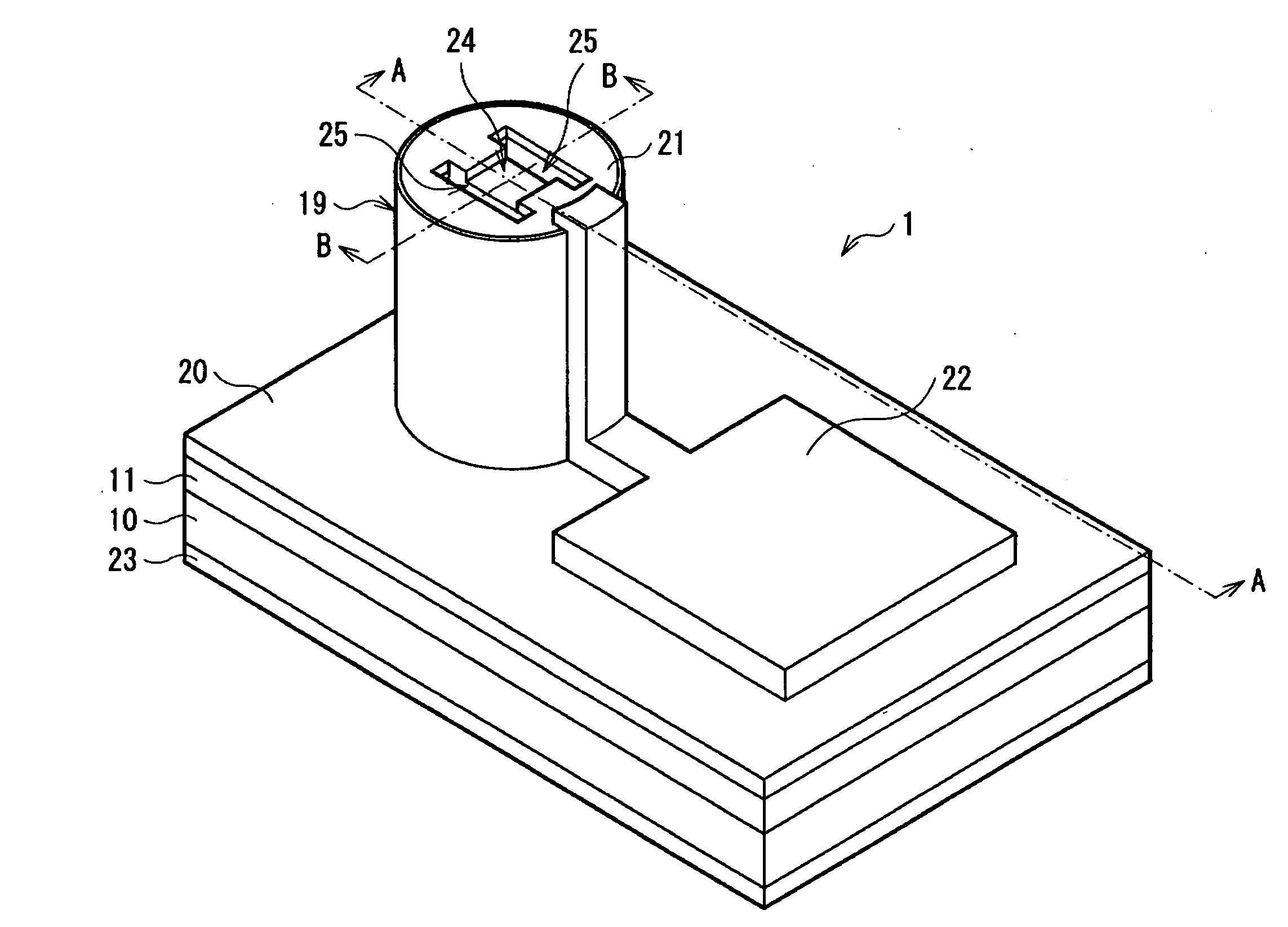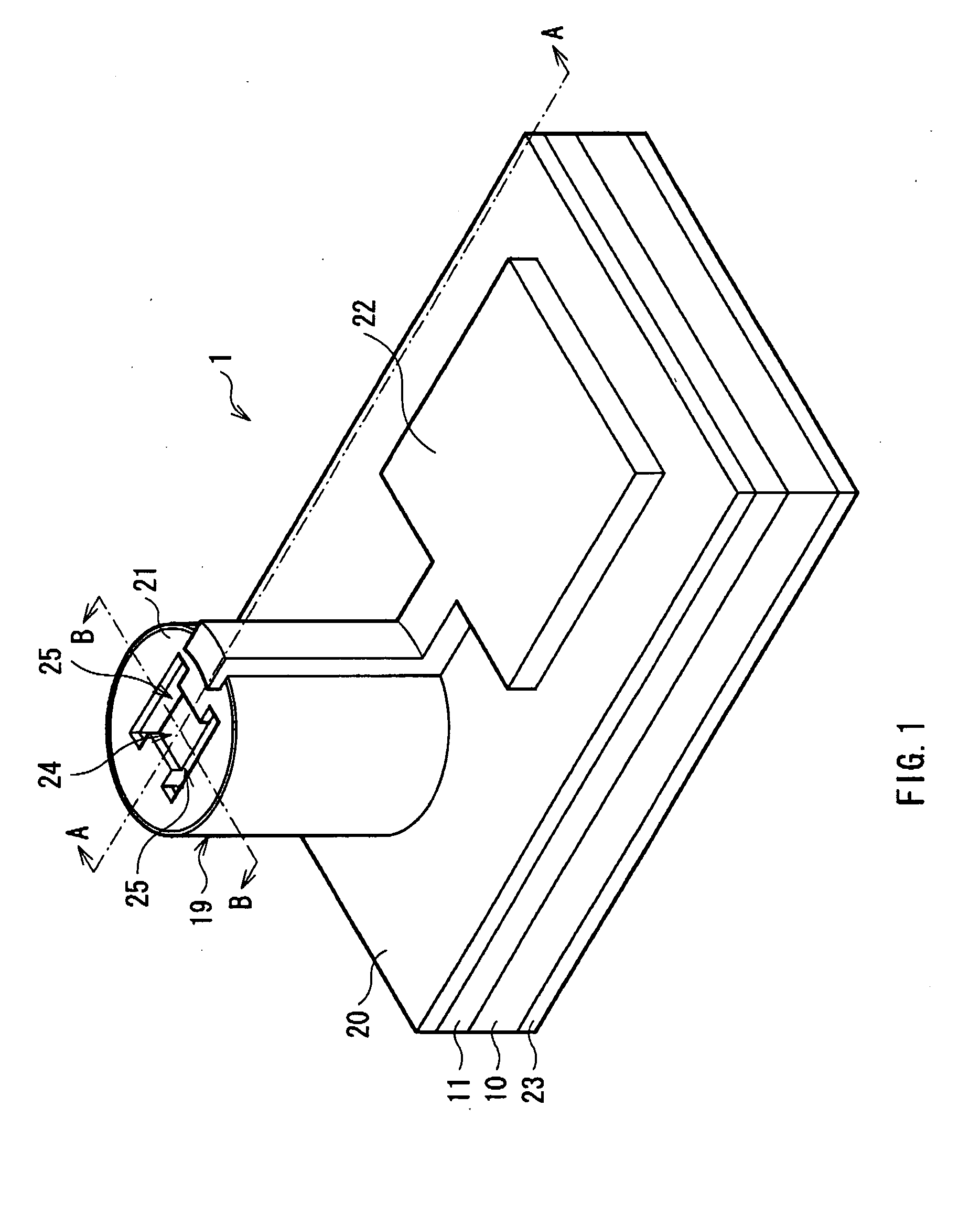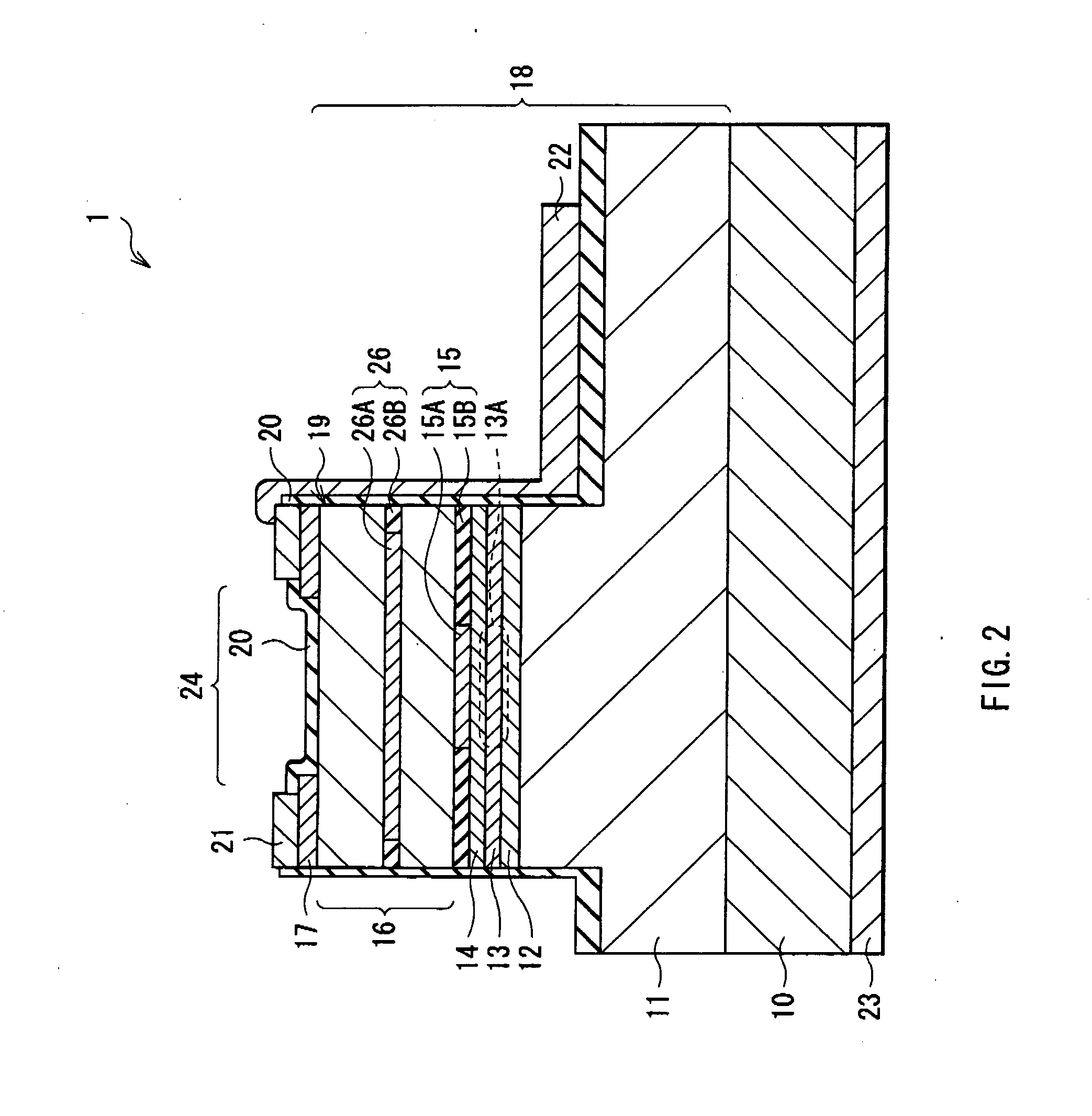Vertical cavity surface emitting laser and method of manufacturing it
a laser and vertical cavity technology, applied in lasers, semiconductor devices, semiconductor lasers, etc., can solve the problems of difficult manufacturing of such a high-angle inclined substrate, low laser light output, and high cost of high-angle inclined substrates, and achieve easy and inexpensive manufacturing, and easy and inexpensive manufacturing.
- Summary
- Abstract
- Description
- Claims
- Application Information
AI Technical Summary
Benefits of technology
Problems solved by technology
Method used
Image
Examples
Embodiment Construction
[0050]Descriptions will be given of an embodiment of the invention in detail with reference to the drawings.
[0051]FIG. 1 shows a perspective view of a VCSEL 1 according to an embodiment of the invention. FIG. 2 shows a cross sectional structure taken along arrows A-A of the VCSEL 1 of FIG. 1. FIG. 3 shows a cross sectional structure taken along arrows B-B of the VCSEL 1 of FIG. 1. FIG. 4 shows a cross sectional structure in a lamination plane of a current confinement layer 15 of FIG. 2 and FIG. 3. FIG. 5 shows an example of a top face structure of a mesa 19 of FIG. 1. FIG. 6 shows another example of a top face structure of the mesa 19 of FIG. 1. FIG. 1 to FIG. 6 are schematic views, and thus the dimensions and the shapes thereof are different from the actual dimensions and the actual shapes.
[0052]The VCSEL 1 has a semiconductor lamination structure 18 in which, for example, a lower DBR mirror layer 11 (first multilayer film reflector), a lower cladding layer 12, an active layer 13, ...
PUM
 Login to View More
Login to View More Abstract
Description
Claims
Application Information
 Login to View More
Login to View More - R&D
- Intellectual Property
- Life Sciences
- Materials
- Tech Scout
- Unparalleled Data Quality
- Higher Quality Content
- 60% Fewer Hallucinations
Browse by: Latest US Patents, China's latest patents, Technical Efficacy Thesaurus, Application Domain, Technology Topic, Popular Technical Reports.
© 2025 PatSnap. All rights reserved.Legal|Privacy policy|Modern Slavery Act Transparency Statement|Sitemap|About US| Contact US: help@patsnap.com



